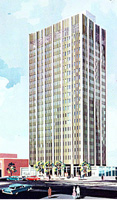The Florence Griswold Museum building was the site of one of the most renowned Impressionist art colonies in the United States. Founded in 1899, the Lyme Art Colony hosted Impressionist and Tonalist artists such as Edward Rook, Childe Hassam, Willard Metcalfe, and Henry Ward Ranger. The artists favored landscapes and plein air painting. The museum itself is housed within the 1817 Late Georgian mansion in which the artists boarded. The upper floor hosts exhibits while the lower maintains the appearance of the home in 1910. The site also includes additional exhibit space, an education center, the restored gardens, and William Chadwick's (1879-1962) studio.
The museum offers exhibits, period rooms, guided tours for groups, self-guided tours, student tours, student hands-on activities, school outreach programs, resource library access, painting opportunities, workshops, summer camps, gardens, lectures, educator workshops and tours, and boxed lunches. If students wish to order boxed lunches rather than bringing a bag lunch, advance notice is required. Outreach program options include art activities and lectures. The website offers the opportunity to watch a video about the colony, a teacher's guide, lesson plans, pre- and post-visit activity suggestions, and suggested reading lists.


